The most common mistakes even successful companies make are during the onboarding process.
No matter how good your product is, the most important thing is how the users will respond to it.
Finding an excellent market fit with your product is not enough if the onboarding experience is terrible.
Learning new things is difficult, and if you make it easy from the start, you can retain more customers.
Avoid the most common mistakes in the SaaS onboarding process by looking at this comprehensive list.
Failing to Connect the Buyer’s Journey to the Desired Onboarding Experience
When you’re planning your onboarding strategy, you should keep in mind your ideal customer’s needs.
Pay attention to how they behave in the pre-sale process, and that can help you determine what kind of onboarding they expect.
Consider looking into social analytics and track first-time interactions with your software to see how your initial onboarding process responds to their needs.
You can easily change your onboarding process once you’re aware of your customer’s expectations.
The most important thing is to focus on interaction and engagement.
You have to direct their attention to things that matter to them. It will make the acquisition much smoother, and you’ll build trust with your customers during the post-sales process.
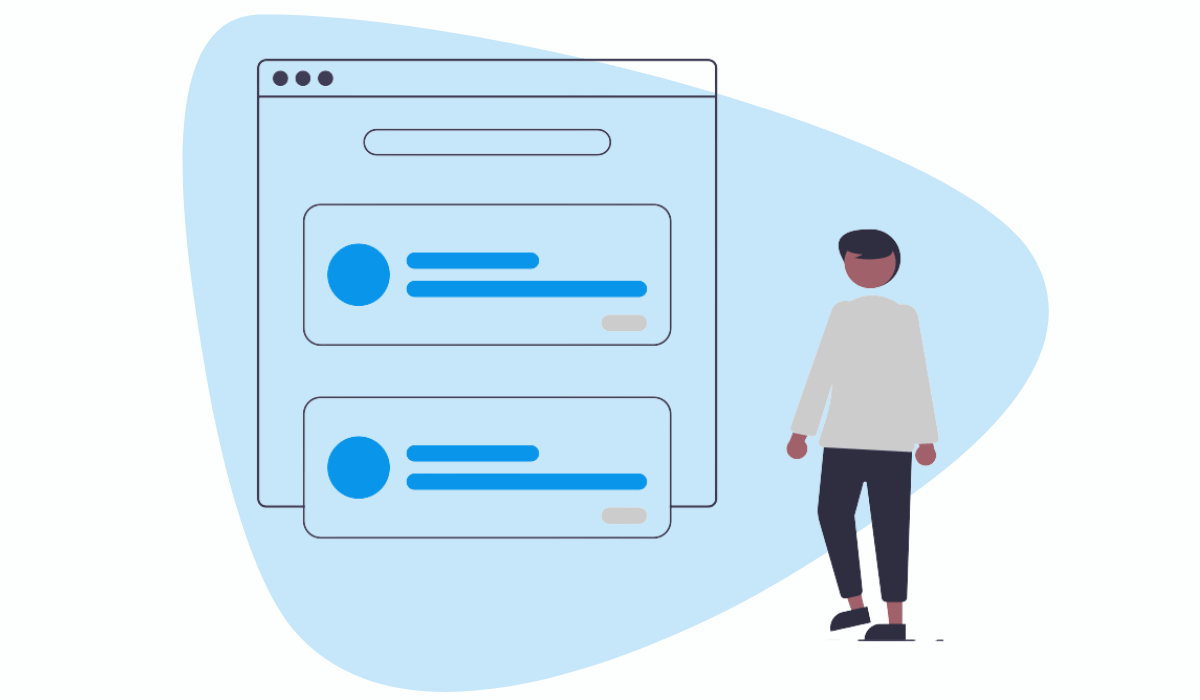
It’s counterproductive to try to get as many leads as possible. You should focus on getting to those who will see value in your product and who will be more likely to stay long-term.
You have to make sure that your customer didn’t waste time and that they’ll continue their business with you.
To make the right onboarding strategy, you should listen to your customers and develop your onboarding process according to their expectations, needs, and expertise.
Overwhelming the User With Too Much Information at Once
Don’t send your users running by bombarding them with too much information at once.
If you put too much stuff in front of your user to interact with, they will simply abandon you. User onboarding should help users take the first steps in using your product and not overwhelm them to the point of giving up.
Another thing to keep in mind is that this approach makes you look bad.
If you give the users too much to do at once, or if too many things pop up to grab their attention, it will seem like your product is too difficult to use. And you don’t want that.
Users came to you because you promised to solve their problems and make their lives easier, so if you look like a high-maintenance tool, they’ll leave you for someone else.
You should take advantage of this by only focusing on the necessary features.
That way, you will offer them their Aha! Moments in which they’ll realize your value proposition.
Point your customers to your core features and make the learning process easy and simple.
If they want to, you can always show them more complicated stuff later. Let them get used to your product first.
Most people stop using a product because it seems too complicated. Too many distractions can lead to higher churn rates at these beginning stages, and you should avoid that.
Not Dividing the Onboarding into Stages
Make the onboarding process more manageable by dividing it into stages.
Onboarding is an ongoing process, and you need to convince your users repeatedly that you’re the right solution to their problems.
Each customer you have is at a different stage in the onboarding process. By dividing it into phases, you can focus on bringing the best out of your product.
Improve your onboarding process in whatever stage of learning your customers are.
You will not need a walkthrough tutorial for someone who’s been using your product for three months, will you?
At each stage, you should encourage, develop content for easier problem-solving and point out benefits your product brings to customers.
Here is a simplified version of a typical onboarding process:
- First stage: the beginning of the onboarding journey that happens outside of your product; it involves direct or indirect information about your product/brand on different channels.
- Second stage: presenting your product and proposition value.
- Third stage: the testing phase; customers sign up for a free trial to test your proposition value
- Fourth stage: combine guidance and self-exploration for better UX and user engagement
- Fifth stage: this is the activation stage; users form habits by using your product regularly.
- Sixth stage: users integrate your product into their daily life
- Seventh stage: connect users with an ongoing customer success management program
Stages make the onboarding process easier for you and your users since you know what to focus on and improve it.
Also, by giving the proper feedback on their progress, you’re building a lasting relationship and creating loyal customers.
Neglecting to Provide Guidance to the User
Simply getting your users to sign-up and then leaving them to figure out your product on their own is a big no-no in SaaS onboarding.
Most customers want to start right away when they first start using a service. They might learn best by doing things on their own, but they still need guidance.
A great onboarding experience is autonomous and minimal. There is a balance in creating a good checklist of things users need to do to familiarise themselves with your product.
Implementing checklists can help you show users the process of learning how to use your product, and it’s a relatively easy way to motivate them and keep their attention.
Allow your users to explore your product at their own pace, have them skip a few steps in your checklist, and only include the necessary pop-ups that will focus their attention on your key features.
Make that path to their Aha! Moment quick and easy.
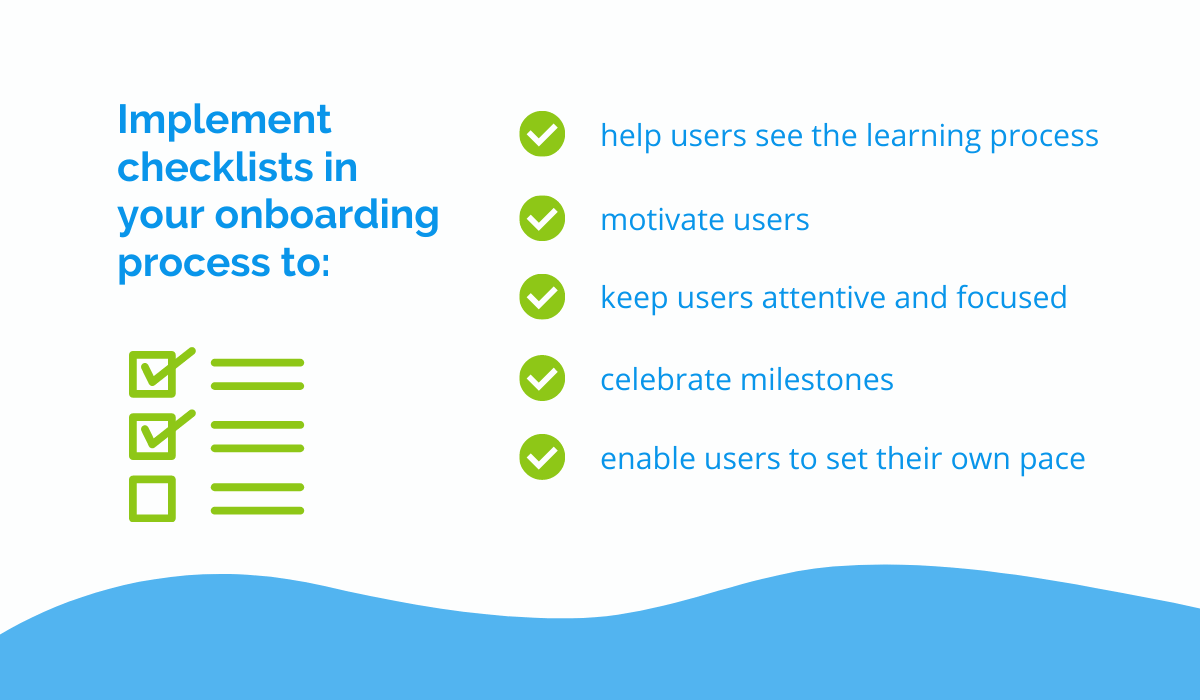
Short walkthroughs should give them a general overview, and if they need extra guidance, you have to implement good customer service to appease them.
Even after the initial walkthrough and familiarizing your customers with the product, you should continue banking on the relationships you now have with your customers by celebrating milestones.
In this way, you’re still paying attention to the progress they’re making, and you’re making them feel accomplished.
Allowing your customers to explore your product on their own is great. Still, you should also consider putting necessary tools to help them if they encounter any problems and guide them.
Being Unavailable During Onboarding
Poor customer service will hurt you in the long run.
A recent survey found that almost 59% of customers will stop using the product after several bad experiences.
It usually happens because of a poor follow-up and bad onboarding experience.
Whatever stage your customers are in their onboarding journey, they will have some questions.
You can try your best to put great tool-tips or notifications, but they might not need that information right now, or they might have some different questions altogether.
Customer service is indispensable in this process, and even 68% of customers say they’re willing to pay more if a company has good customer service.
Poor customer service is not an option anymore since you can lose a lot of revenue.
The best option is to have human contact for your customers, and you can provide different channels of communication, depending on their preferences.
If not, make use of FAQ and knowledge bases where your customers can easily access and find solutions to the most common problems.
Some might not even want to ask for help but simply abandon you.
That’s where you need to go with a different strategy. Use emails to reach out to them and ask about their problems (for instance, if they were stuck at a particular stage during onboarding).
Sometimes this can help with conversions and retention, but knowing when to ask questions and being careful not to jump with solutions preemptively is vital.
Frequent checkups might annoy them, so space them out and use them only when they’re necessary.
Making Onboarding Too Technical and Complicated
While you might know every technical aspect of your product and how it works, your users do not.
Most of your users are technical newbies and don’t care about learning the nitty-gritty technical stuff you might be enthusiastic about.
They came to you because they don’t want to do the work or simply don’t know how. They want an easy solution to their problems that won’t make them work hard to get desired results.
Your goal is to get them to their Aha! Moment as quickly as possible, and if you make that process too long, you can say goodbye to your business.
Don’t make them feel like they’re wasting time and energy on your product.
Here are a few tips on how to minimize the time between sign-up and first success.
The first is to focus on benefits rather than features.
Rather than giving them a grand tour of your service and bore them with details, you should use this opportunity to emphasize how beneficial a particular feature is.
Will it help them be more organized? Will it help them track important events, so they don’t miss any?
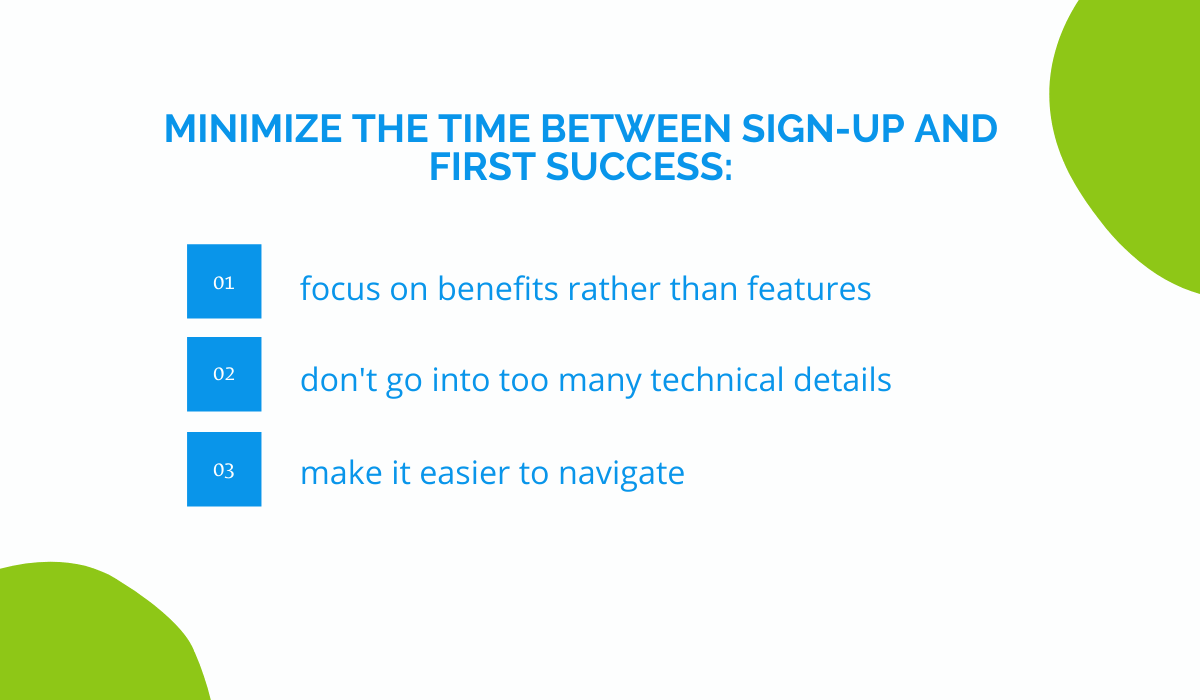
Highlight the benefits in the simplest terms so they can understand and try it out for themselves.
The second is to make it easier to navigate. Your UI should not only look good and as simple as possible, but be easily navigable.
Put yourself in your customer’s shoes. You want to see things clearly and access them quickly and there is no need for bells and whistles.
Making onboarding too complicated will only drive them away from your product.
Failing to Collect Feedback From the Start
Having the correct data is crucial for SaaS companies, and you should get it from your customers.
We’ve already mentioned that you shouldn’t bother your customers from the start, right? But no one said anything about collecting feedback from the start.
That is not to say you should send surveys to your customers after the first login or wait for them to send their complaints.
Like with anything else, you need to have a balanced approach.
The absence of feedback doesn’t mean that everything is fine.
Actually, according to some stats, only one in 26 customers will complain about a problem, while others will simply leave without ever saying anything.
However, if you want to improve your service and prevent similar occurrences, you must know why they left.
Use analytics to help you monitor customer behavior, and if you see some not completing their onboarding process, it’s helpful to send check-in emails.
The feedback you get will help you improve your onboarding process, as well as the product itself.
If you really don’t want to bother your customers, especially in the early onboarding stages, you can use different data collecting tools: heat maps, session replay, and funnel analytics.
Such tools also help you identify flight-risk customers and prevent churn.
Customer feedback is vital for future planning and, most importantly, for improving your onboarding experience. The earlier you start, the quicker you can resolve significant problems.
Paying Insufficient Attention to the Users’ Successes
The user’s success is your success, too, and you should celebrate that.
SaaS companies have one advantage over other businesses: they know exactly how and when their products are being used.
This can help in many things, but especially during onboarding because they can have a proactive customer success strategy.
Once the initial excitement about using SaaS products dies down, you should double down on reminding users of your product’s impact and deepening your relationship with them.
You can do that by celebrating small achievements.
Whenever a user completes an important task that gets them closer to their Aha! Moment, you should reward that. Keep them engaged and build positive rapport.
We’ve mentioned celebrating milestones as an ongoing encouragement during onboarding, but once your customer makes a big breakthrough or a big win, you should alert them of that fact.
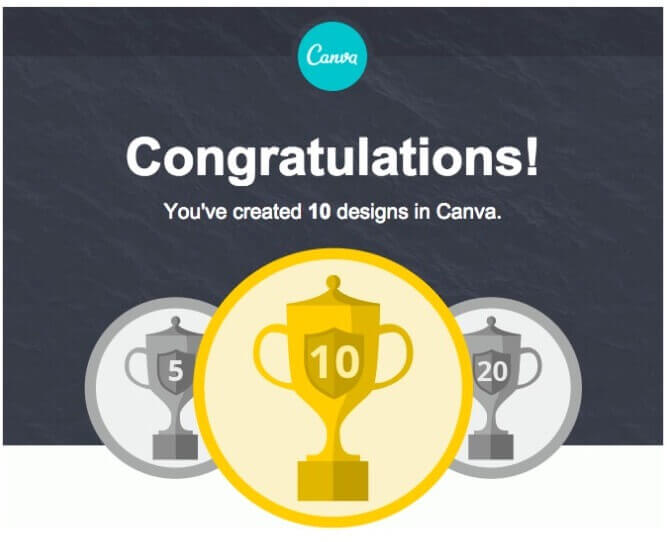
Make new users excited about their onboarding journey because a positive attitude opens the doors for renewals and even upgrades.
Celebrating milestones keeps them motivated and pushes them to make habits by using your product regularly.
It also shows them you care about their ongoing journey, and by making small wins, they’re surely on the right path to win big.
Neglecting to Monitor the Onboarding Progress
You’re making a big mistake by not properly monitoring your customer’s onboarding progress.
You’ve successfully built your onboarding program, hired the right people for your customer service and customer success teams, but you still see high churn rates. Why?
Because you’re not actually monitoring your customer’s progress.
If you fail to monitor their behavior during each stage, you won’t be able to identify common problems and react quickly to prevent churn.
As good as your customer success team is, they’re only human, and they can’t spot trends in customer behavior as efficiently.
Enter onboarding metrics.
You need to monitor some aspects of their behavior to have a clearer picture of how your customers are using your product and which problems they are experiencing.
This data can help you prioritize your onboarding activities.
Here are some crucial onboarding metrics you should track:
- Frequency of user logins
- Time per session
- Features they use or don’t use
With this, it’s much easier to look at other things such as completion rate, usage time, daily active users, churn rate, and time to value.
Once you know where the problems are, you can fix them quickly.
Over-Automating the Onboarding Process
Don’t automate everything during your onboarding process.
Some level of automation is good because it saves you time and money, and it generally makes for a smooth onboarding experience.
However, a mistake most companies make is to automate everything.
Customers are becoming more and more used to AI for their customer service.
In fact, 90% of SaaS companies are taking advantage of that, and by 2023 almost 40% of customer interactions will be automated.
Even though SaaS products are cloud-based and there is no need for human intervention, your customers still expect to have some human touch while using your product.
According to PWC, almost 59% of customers feel like companies neglect the human element in CX, and nearly 82% want more of it in the future.
It’s evident primarily during the onboarding process.
Self-service is still preferred, but you should also have customer service teams available to answer questions, especially for your highest-ranking customers.
Offering a more personalized experience boosts their engagement and satisfaction with the company.
Even on the lowest tiers, if an actual person who works at the company contacts a customer just to reach out and say: “Thanks for doing business with us!” it shows you’re committed to customer success.
It gives a great first impression.
Avoid unnecessary automation, especially while your customer is still learning about your product.
Use automation for later, for pesky, unavoidable, and administrative tasks.
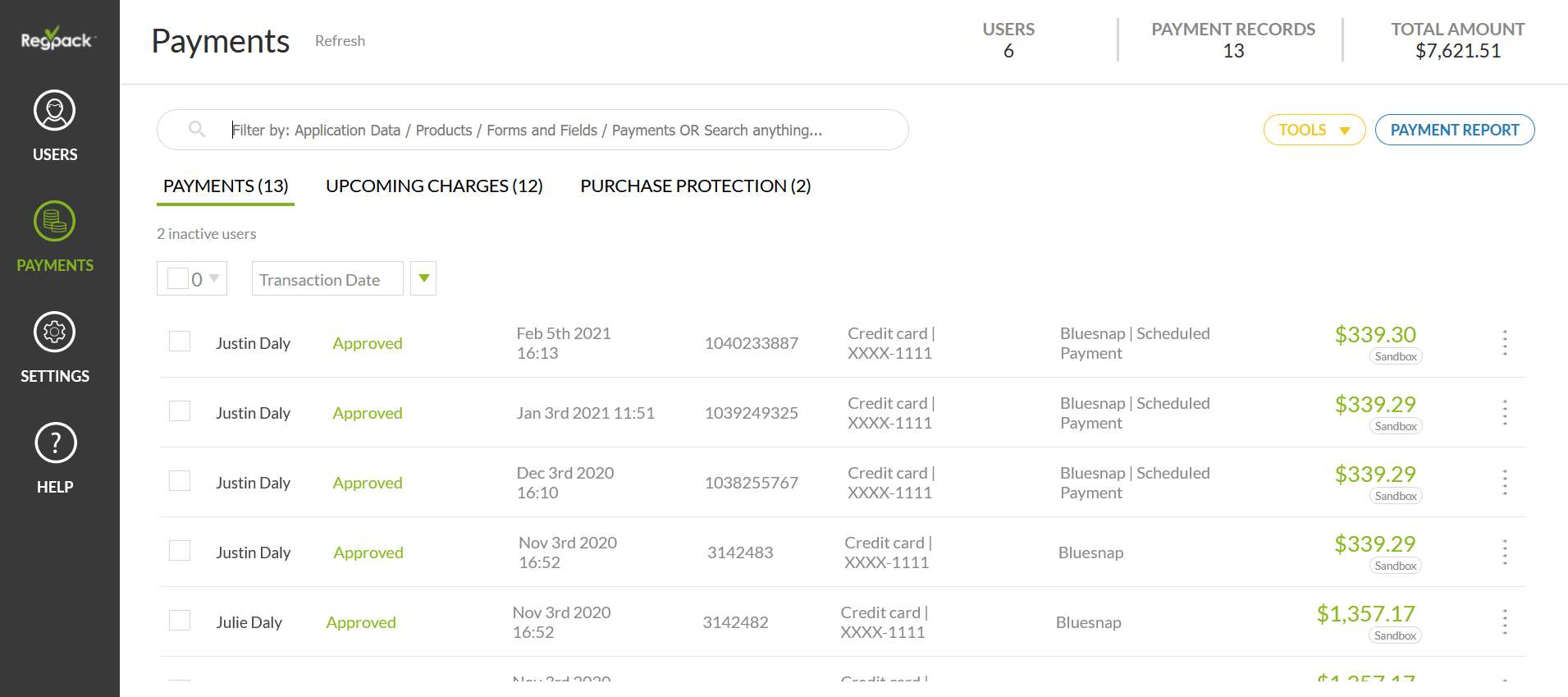
RegPack can help you automate everything else that doesn’t require human intervention—like billing, invoices, and transactional emails.
Combine self-service and human touch to address every concern they might have and invest more in aspects that will help you retain customers better.
Failing to Demonstrate Long-Term Value to Users
Failing to demonstrate your long-term value will increase your churn.
Every day, a shiny new piece of software pops up and promises to help you in your business, but what is their proposition value?
It’s easy to focus on how different your product is and demonstrate all the fantastic features that will potentially attract your customers.
Still, you fail to explain how exactly this is useful in the long run.
Everything you promised in the marketing, social media, etc., should be supported by what you’re giving them when they come to you to test it out.
If what they hear doesn’t match what they see and experience, abandonment is unavoidable.
People dislike change, and once they commit to something, they want to stay with it long-term.
The hassle of learning new software is time-consuming. The earlier you demonstrate your long-term value to your users, you’ll be better off keeping them as your loyal customers.
It is during the onboarding that this is crucial.
While they are learning about your product, you have to create actions and events that will get them to their Aha! Moments and thus make the product adoption quicker.
Once the customer’s needs align with the proposition value, it’s a recipe for success.
The first impression is what makes a significant impact on people’s value perception.
Ignoring the Early Indicators of Churn
Churn happens all the time, but if you want to prevent it—watch out for the early signs!
Everything you do in your onboarding should help you reduce churn. But all the metrics and analytics in the world will not help you if you do not act on the early signs of churn.
Simply saying: “Ah, churn is inevitable!” is not what will keep you in the business.
Losing customers is a deep concern for SaaS businesses, and you’re potentially losing revenue from them. Some customers will leave, which is undeniable, but those worth saving should be your top priority. You should do everything to keep them.
If you see that your time to value is too long or some features are underused, you should make follow-up actions to fix those problems on time.
The best solution is to automate them.
Send in-app triggered messages, emails, and modals, which can help you react on time and bring back those at-risk customers you want to keep.
Save retention emails for customers who haven’t used your product in some time and remind them that you’re still there to help them achieve their goals.
Analyze everything and develop a strategy to prevent it. You should care about why your customers left because losing them is a loss of profit.
Just because you can’t stop churn, it doesn’t mean you shouldn’t do anything about it.
Thinking All Users Need the Same Onboarding Experience
Everyone needs to have a different onboarding experience.
Ten different customers will have ten different needs.
That’s even more frustrating to deal with once that number rises to thousands or even hundreds of thousands.
So the easiest solution would be to make a one-size-fits-all onboarding experience, right? But that is the quickest way to churn than anything else. If their needs don’t match your product, it can hurt both their progress and your revenue.
Here is where customer data becomes an important asset. You can personalize the onboarding experience based on your user base and their customer profile.
Once you know what they want, it’s just a matter of delivering it. When you have universal onboarding, you risk doubling your costs for customer service and raising churn rates.
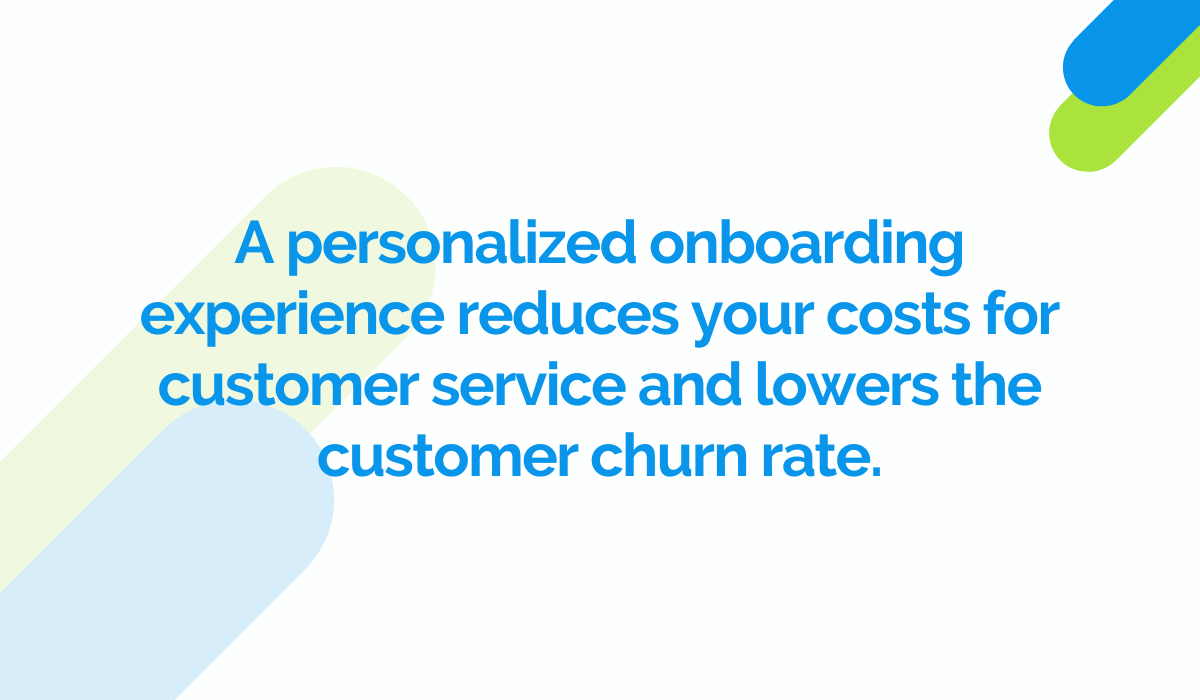
The easiest way to personalize it is by asking for some basic data during sign-up.
You can expand on this by personalizing the onboarding based on trends.
For this, you’ll need more information, like their location, interests, gender, or language. This ensures a tighter connection to the product.
And finally, you can tailor their experience based on the level of expertise.
You want your customers to be confident while using your product, right? So offer them alternatives for their onboarding journey.
Offer more guidance to newbies and let the expert do what they want. Experts probably want to start right away, while beginners will need more support.
That way, you can steer your customer success team towards those who need more help for efficient use of time and money.
Conclusion
Mistakes are bound to happen. But you shouldn’t risk revenue loss and bad customer experience for mistakes that you can easily avoid.
Provide guidance when your customers need it, monitor their onboarding experience, and celebrate their success to have lower churn.
You should demonstrate your product’s long-term value on every step of the user’s customer journey and automate those aspects of your product that don’t require a human touch.
Also, ignoring early signs of churn and thinking that every customer needs the same onboarding experience will quickly put a lock on your business.
Now that you’re aware of every pitfall your business can stumble upon, it’s time to make improvements!


















